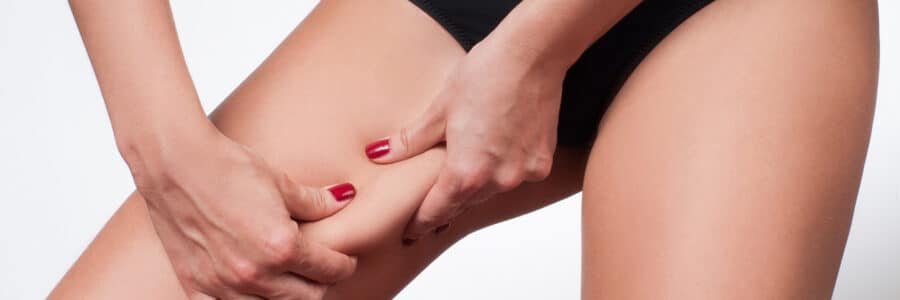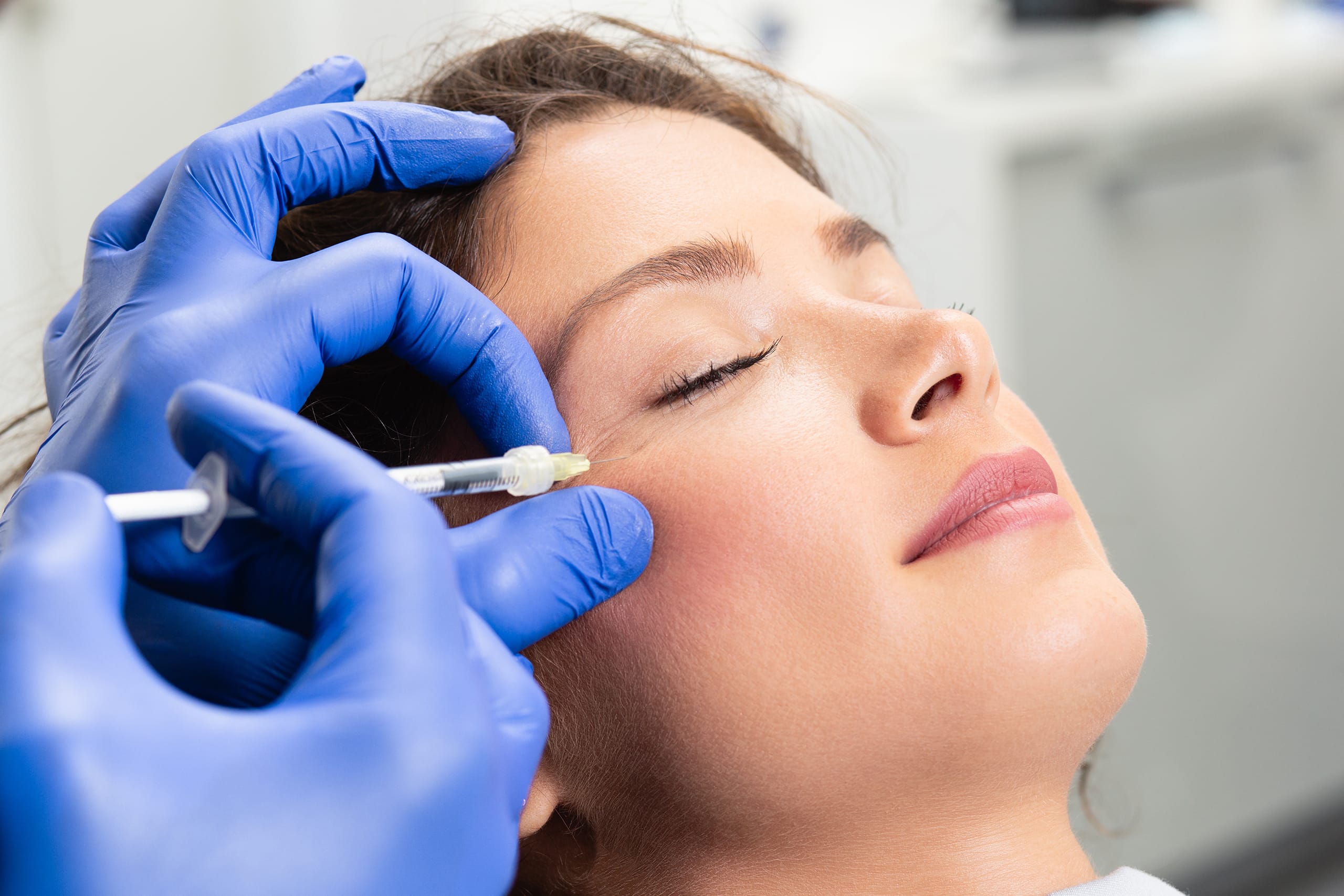In summer, in particular, many patients wish to show off their legs with appropriate clothing. But our thighs often thwart our plans, because slack and excess skin on the thighs can disturb the overall picture and often leads to a sagging self-confidence. When exercise and dieting no longer help, many sufferers opt for a thigh lift, which is also possible in combination with liposuction. Excess skin and fat tissue are removed, giving your legs a firm, firm and slim shape again. Depending on the scope of the treatment, Dr. Matiasek can also tighten your thighs using the Avelar technique. Which method makes the most sense for you will be discussed in a joint consultation.
When is a thigh lift used?
A thigh lift is usually done for aesthetic and not medical reasons. Extensive weight loss, a lack of exercise or a decrease in elasticity due to the natural and inevitable aging of the skin lead to the skin on the thighs sagging, tissue sagging and the skin no longer being able to return to its original shape. Hereditary predisposition is often to blame for an above-average loss of skin elasticity. A tightening of the thighs, during which excess skin and fat tissue is removed, is the ideal solution.
Who is a thigh lift suitable for?
A thigh lift is basically aimed at all patients who are affected by the shape and appearance of their thighs and who want firm and sporty legs. However, there are two basic requirements for a thigh lift: You must be at least 18 years old and in generally good health. Different methods can be used depending on your individual starting position and the desired result. The advantage of this is that Dr. Matiasek can offer you a suitable treatment regardless of the cause. Whether a thigh lift is an option for you and which method makes the most sense is clarified in advance in a joint consultation. In this, Dr. Matiasek also discusses possible contraindications that indicate against a procedure.

What do I have to consider before a thigh lift?
So that you are ideally prepared for the procedure and can come to the practice on the day of the operation with a good feeling, Dr. Matiasek conducts a personal consultation beforehand. At this time, you will explain what exactly bothers you and what wishes, ideas and expectations you have in terms of tightening your thighs. After a thorough examination of your thighs, Dr. Matiasek will discuss which method makes the most sense for you to achieve the desired result. He can then create a treatment plan for you that is individually tailored to you and your needs. He will also inform you about the entire treatment process and explain possible risks and complications to you. If you have any further questions, please do not hesitate to ask them before the treatment.
In your conversation together, Dr. Matiasek will also tell you about necessary preventive measures. For example, avoid blood-thinning medication for two weeks before the operation, as these can lead to circulatory and wound healing disorders. You should also limit the consumption of alcohol and nicotine for two weeks or avoid them completely. General anesthesia may be necessary, depending on which method is used to lift the thigh. In this case, you need to be sober for the procedure. This means that you are not allowed to eat anything six hours before the operation – it is best to choose easily digestible food. You can drink unsweetened teas and water up to two hours before the thigh lift.
How does a thigh lift work?
There are various techniques and incisions to choose from for a classic thigh lift. Which one is used for you depends on the extent, localization and condition of your skin - so the treatment process differs from patient to patient. In a first step, Dr. Matiasek makes the incision on the skin: With the one-incision technique (C-incision), the incision is made on the groin and pulled to the beginning of the buttock fold, creating a crescent-shaped incision that later runs in the crotch and is therefore hardly visible in a bikini. The one-incision technique is used when there is little excess skin to remove. The two-incision technique (T-incision) is used for a larger amount of skin. First, the same incision is made as in the C technique, followed by an additional incision in the middle of the inner thigh. This allows the skin around the thigh to be tightened and more tissue to be removed.
Regardless of the cutting technique used, excess skin and fat tissue is now removed, and the skin is tightened upwards. In order to achieve optimal tightening, it is important to attach and sew the skin flaps to the pubic bone and the edge of the groin. The special suturing technique and intensive scar care on your part contribute to the fact that the scars are later very inconspicuous and barely visible. If necessary, drains are placed after the procedure to drain the wound fluid. A plaster bandage also protects the wound from external influences. The classic thigh lift takes about 1.5 hours, after which you will stay in the clinic for one to two days for observation.
An alternative to a thigh lift, under general anesthesia, is the so-called Avelar method. With this method, the fatty tissue is anesthetized locally, which means that no general anesthesia is necessary, and your lymphatic and blood vessels are less stressed. First liposuction is applied and then the excess skin is removed. During the consultation, you will discuss with Dr. Matiasek which method makes the most sense in your case and how the best result for you can be achieved.
What complications can a thigh lift entail?
The thigh lift is a relatively low-risk procedure, but as with any surgical procedure, certain complications can never be completely ruled out. Redness, swelling and bruises are typical side effects, which is why they are no longer a concern, and they go away on their own after a few days and weeks. Under certain circumstances, superficial wound healing disorders in the crotch, a feeling of numbness in the treatment area, secondary bleeding or infections can occur. A build-up of lymph fluid, asymmetrical scars, scar keloids or a so-called dog-ear formation are, in principle, also possible after a thigh lift. However, since Dr. Matiasek works under the highest safety and hygiene standards in his practice and can look back on many years of training and experience as a plastic surgeon, he can reduce the risk of such undesirable to a minimum.
What do I have to consider after a thigh lift?
After a successful thigh lift, please wear compression underwear for six weeks, which ensures that the tissue and skin heal well and that the new shape of the thighs is retained. Maintain good personal hygiene after the operation to prevent wound infection. Sports and other physically strenuous activities that strain the muscles in the thighs should be avoided for four to six weeks. During this period, you should also avoid excessive sun exposure, sauna or solarium. You have to reduce your nicotine consumption for two to four weeks after a thigh lift. In order to promote wound healing, it is important that you adhere to these behavioral measures, otherwise the result could be adversely affected.
When are the results of the thigh lift visible?
How long it actually takes to heal depends on the extent of the procedure and your body’s ability to regenerate. At first you have to be patient, because you can only notice visible changes after a few weeks, when the strongest swelling, redness and bruises have subsided. After three to four months, the healing will be complete, and you can see the final result of the thigh lift. This is usually permanent, but fluctuations in weight and the progressive aging process of the skin can cause the skin to lose its elasticity and tension again. Therefore, make sure you have a healthy lifestyle without nicotine, regular exercise and a diet rich in vitamins. A repeated thigh lift is possible in principle, but whether it makes sense will be clarified in the consultation.
Do you want firm, smooth and sporty legs? Dr. Matiasek looks forward to welcoming you to a consultation in his practice and to creating a treatment plan for you that is individually tailored to you and your needs.






